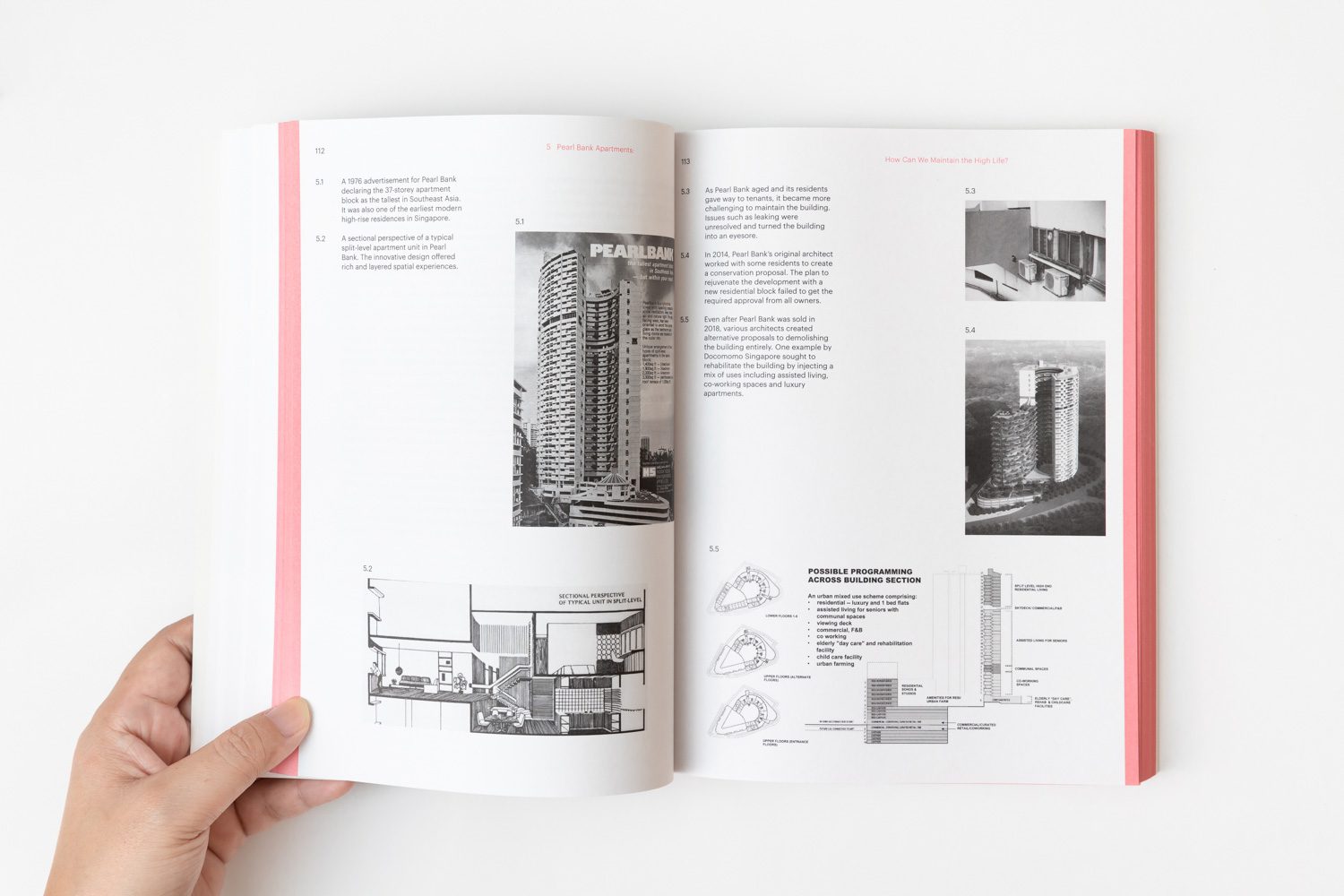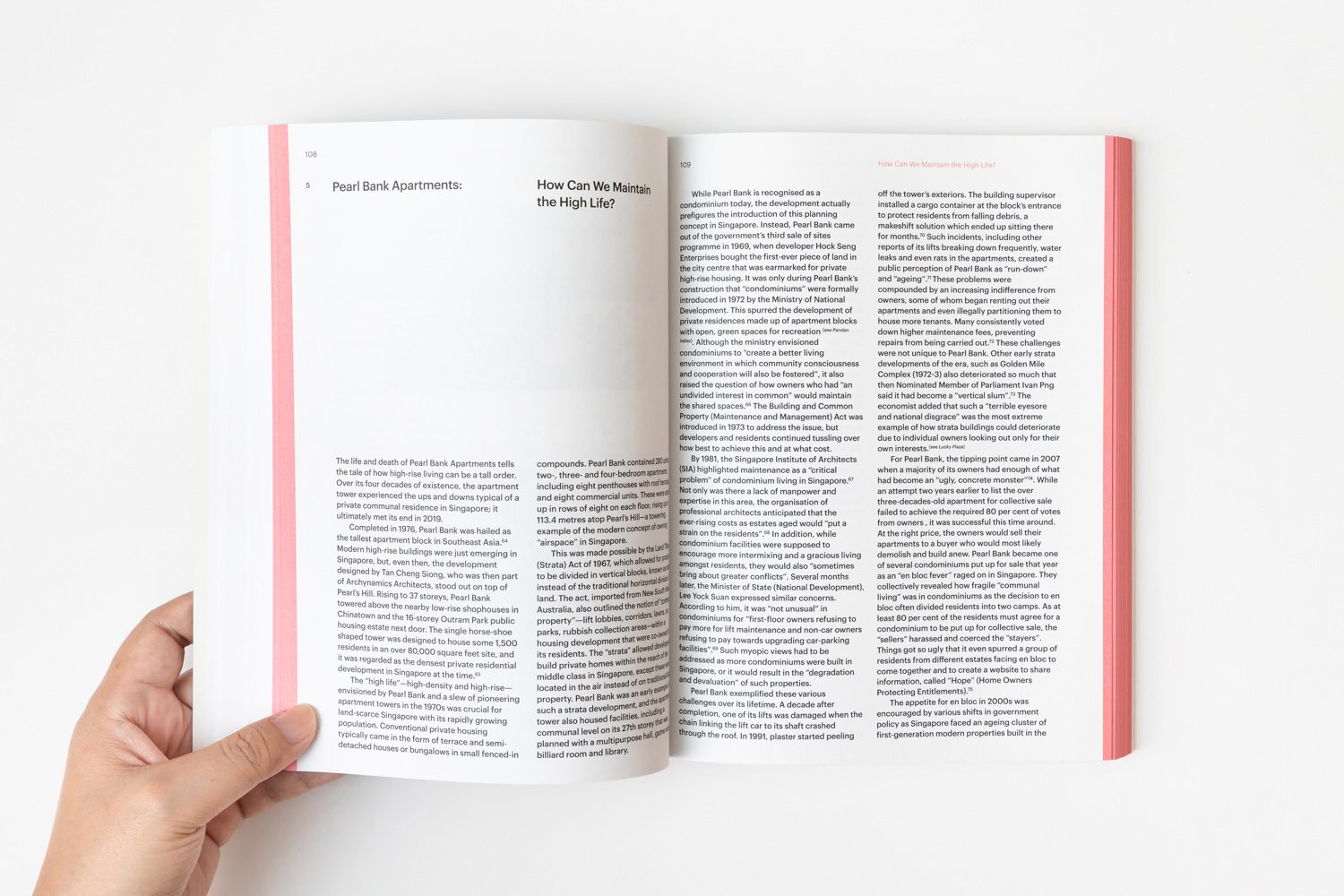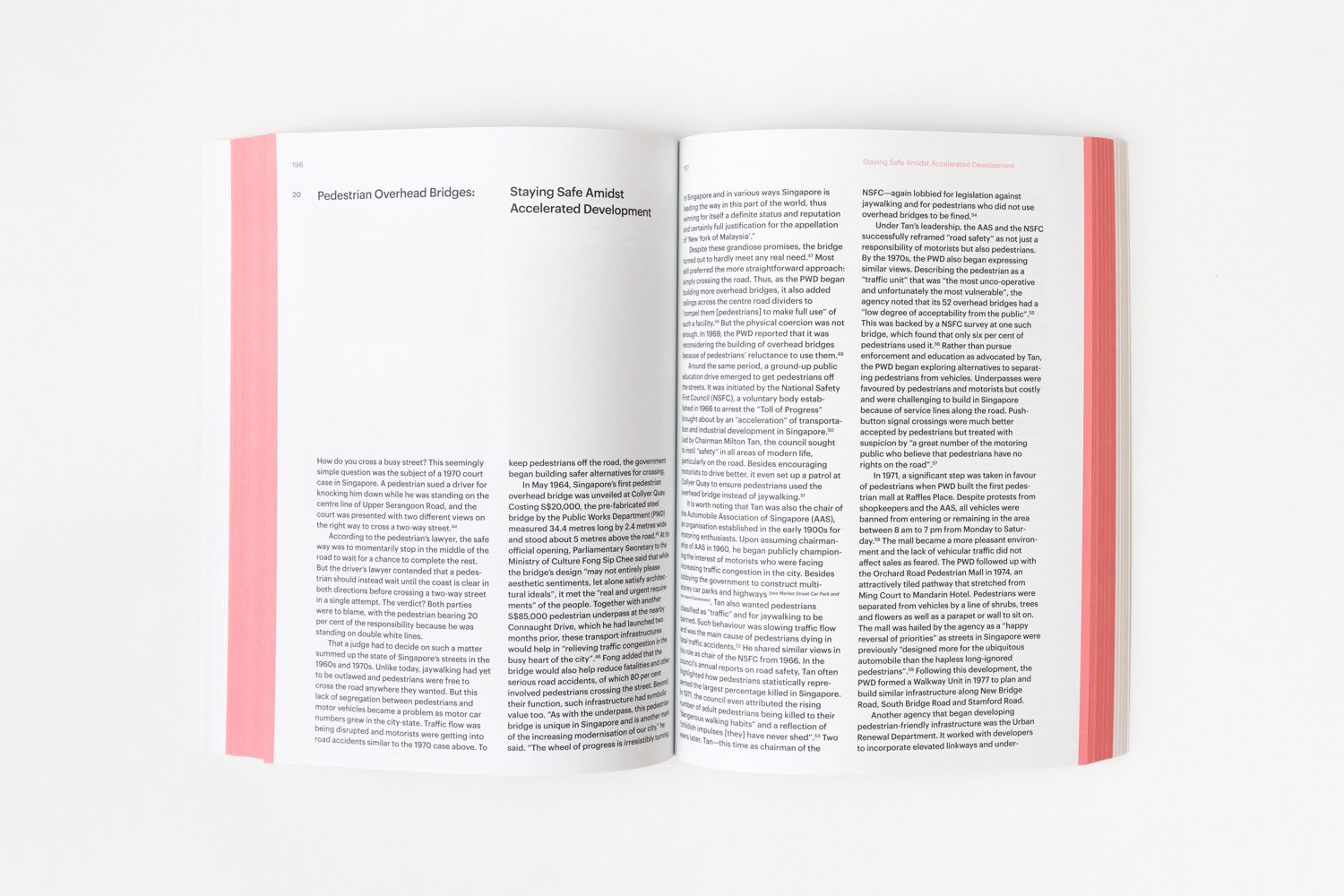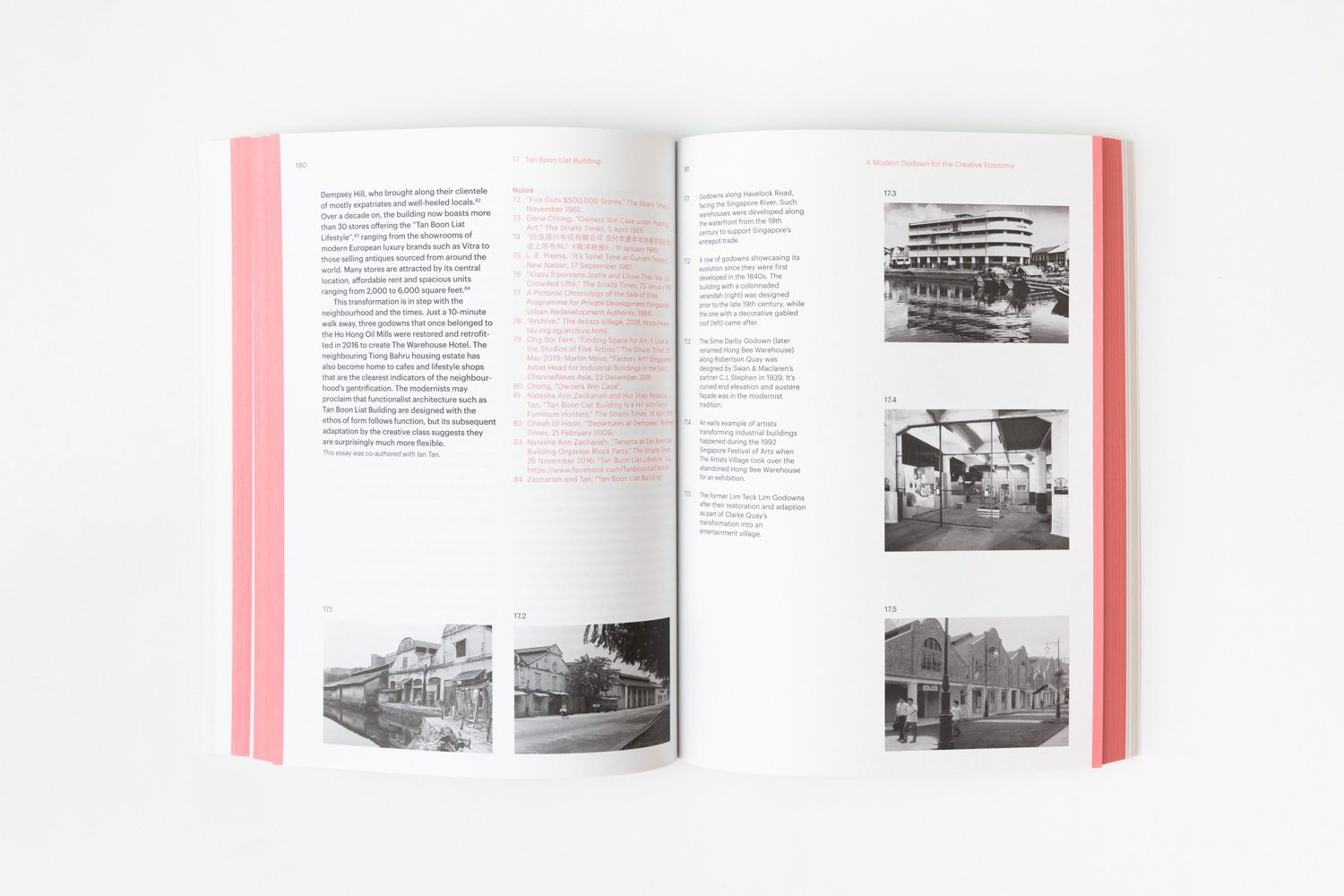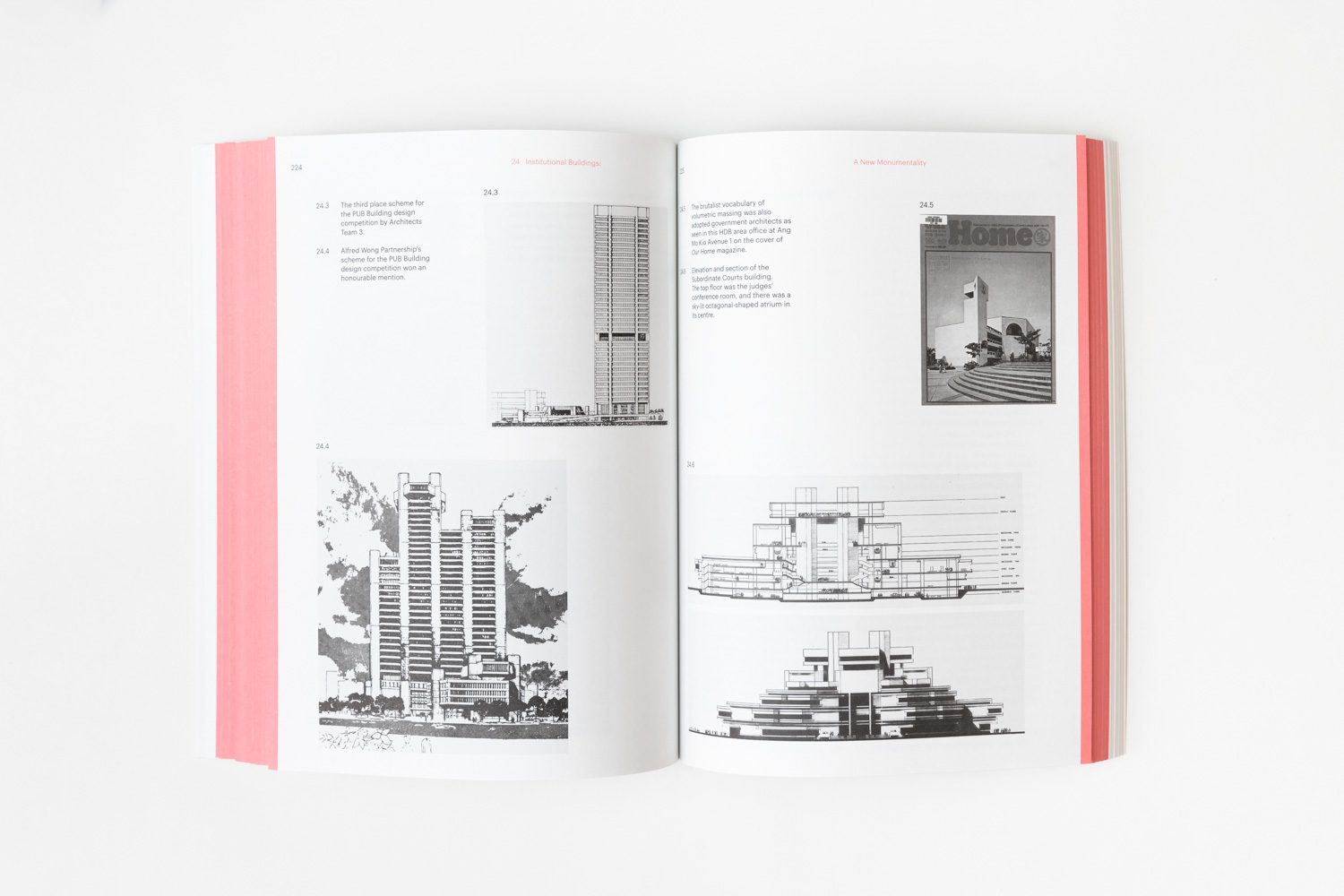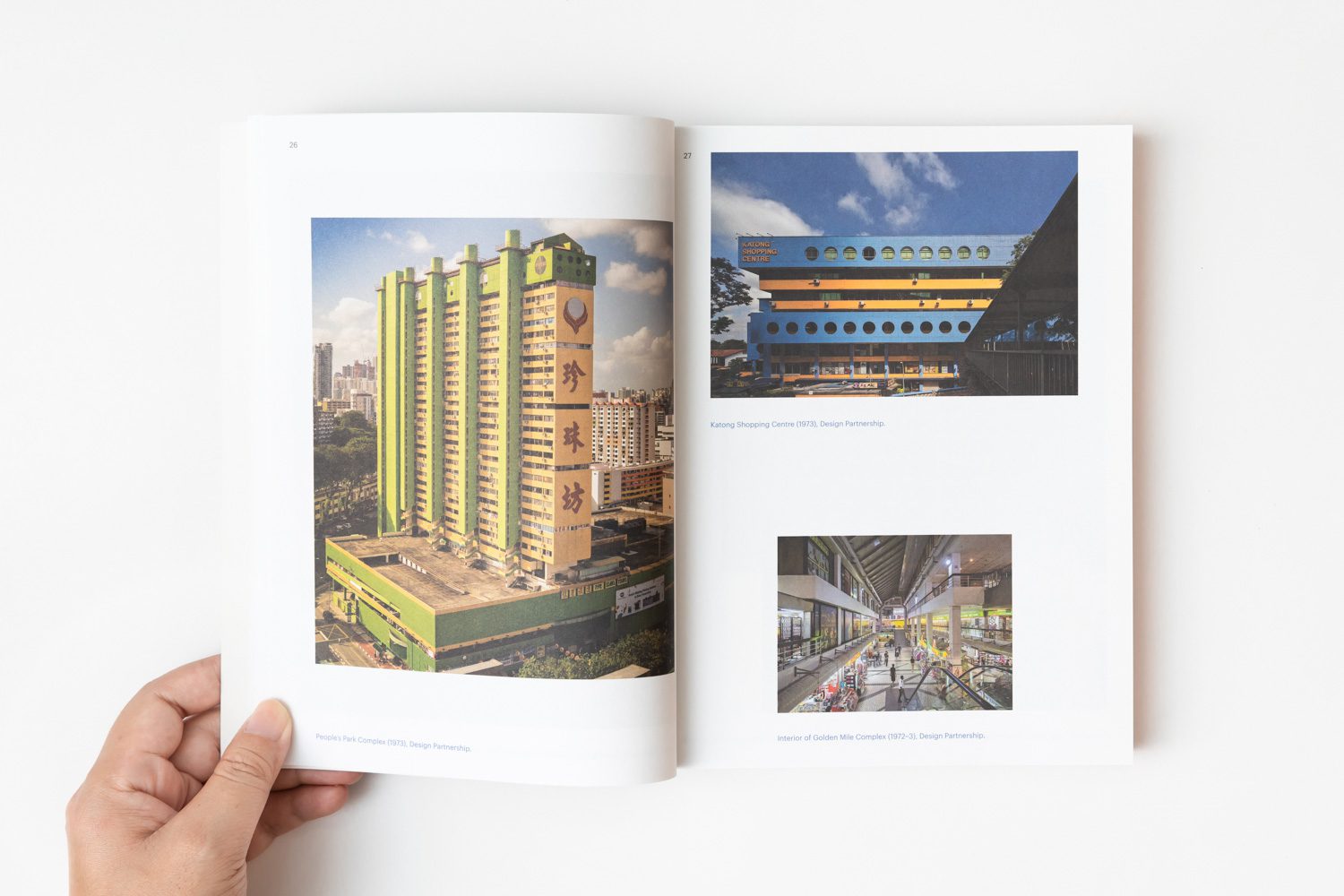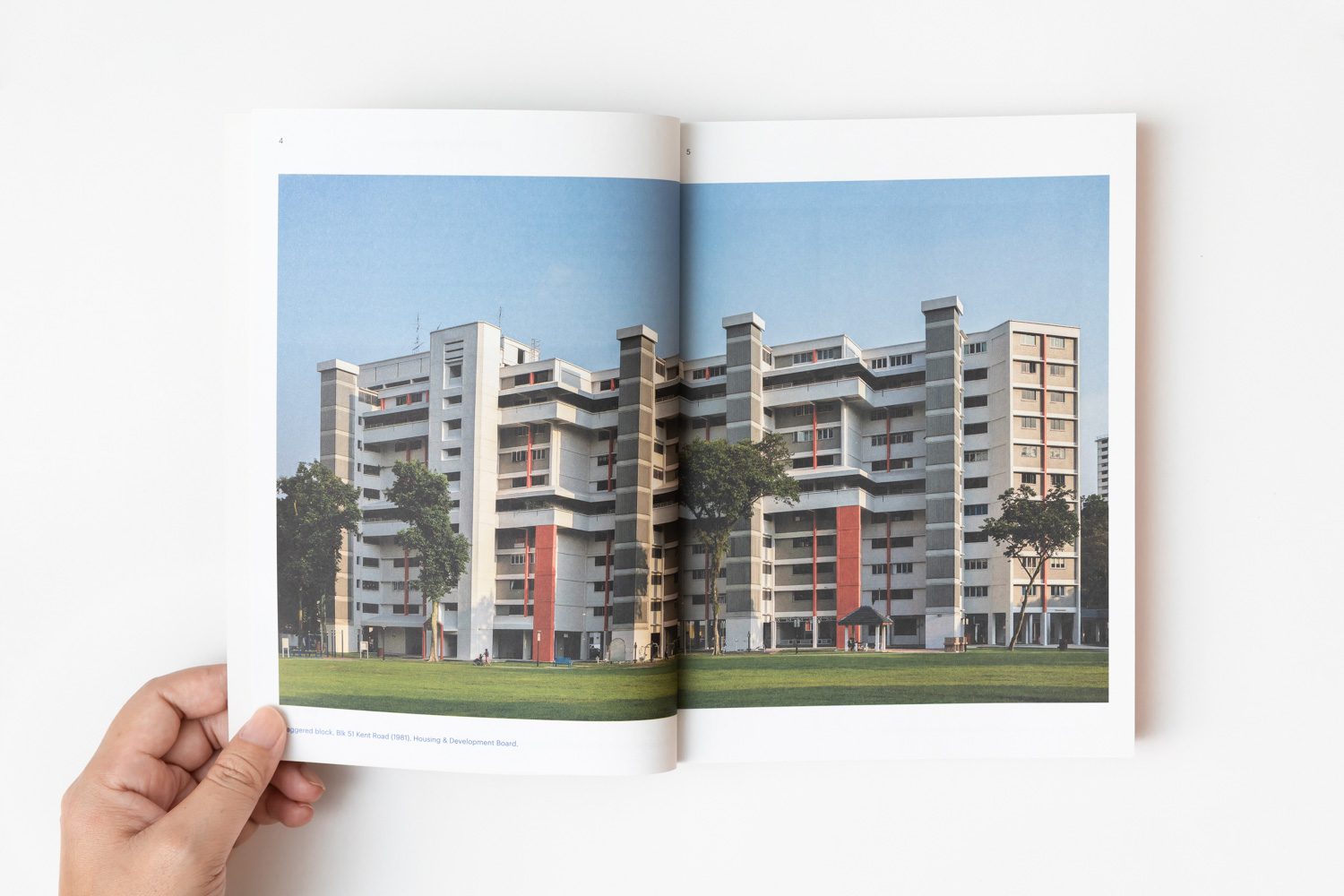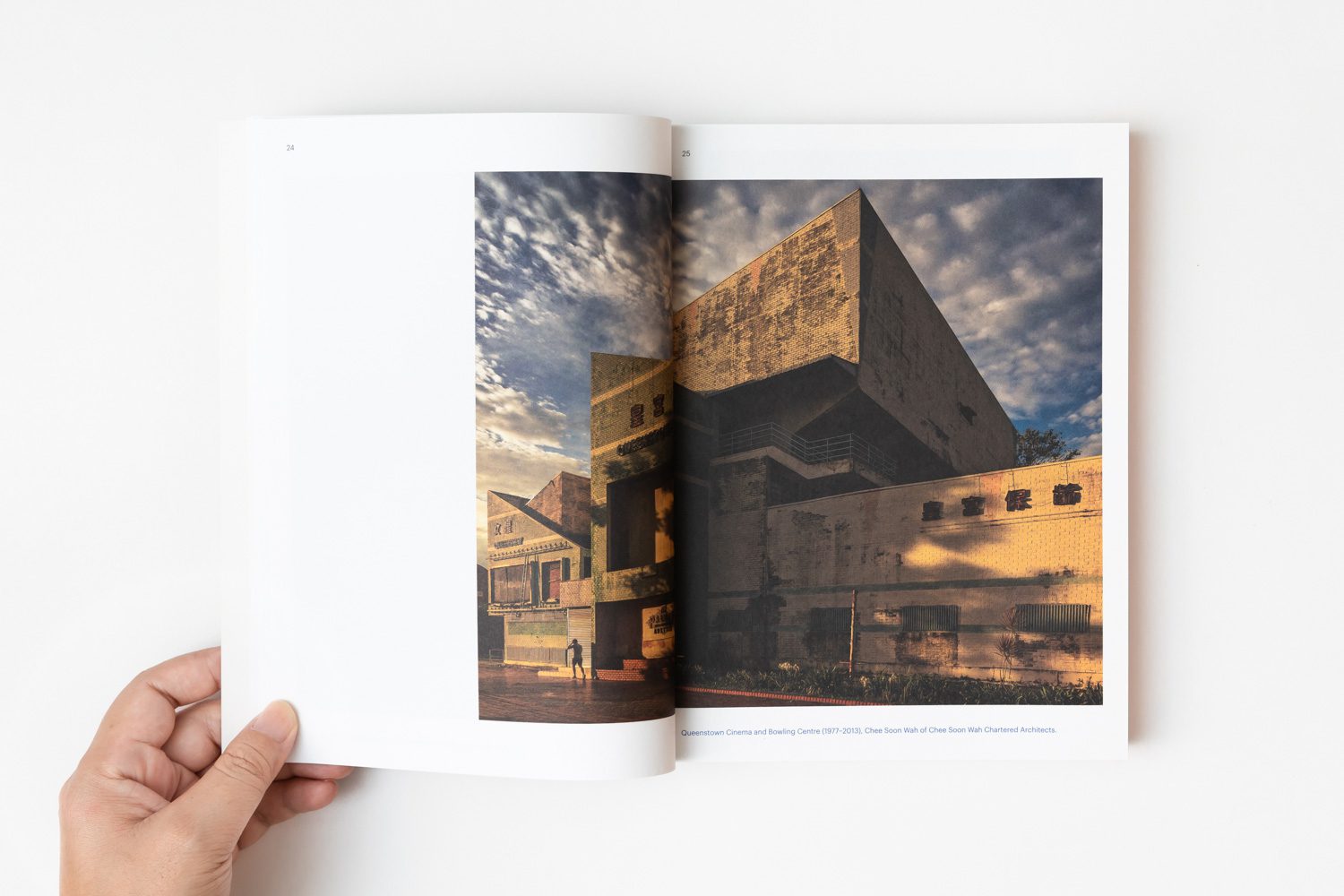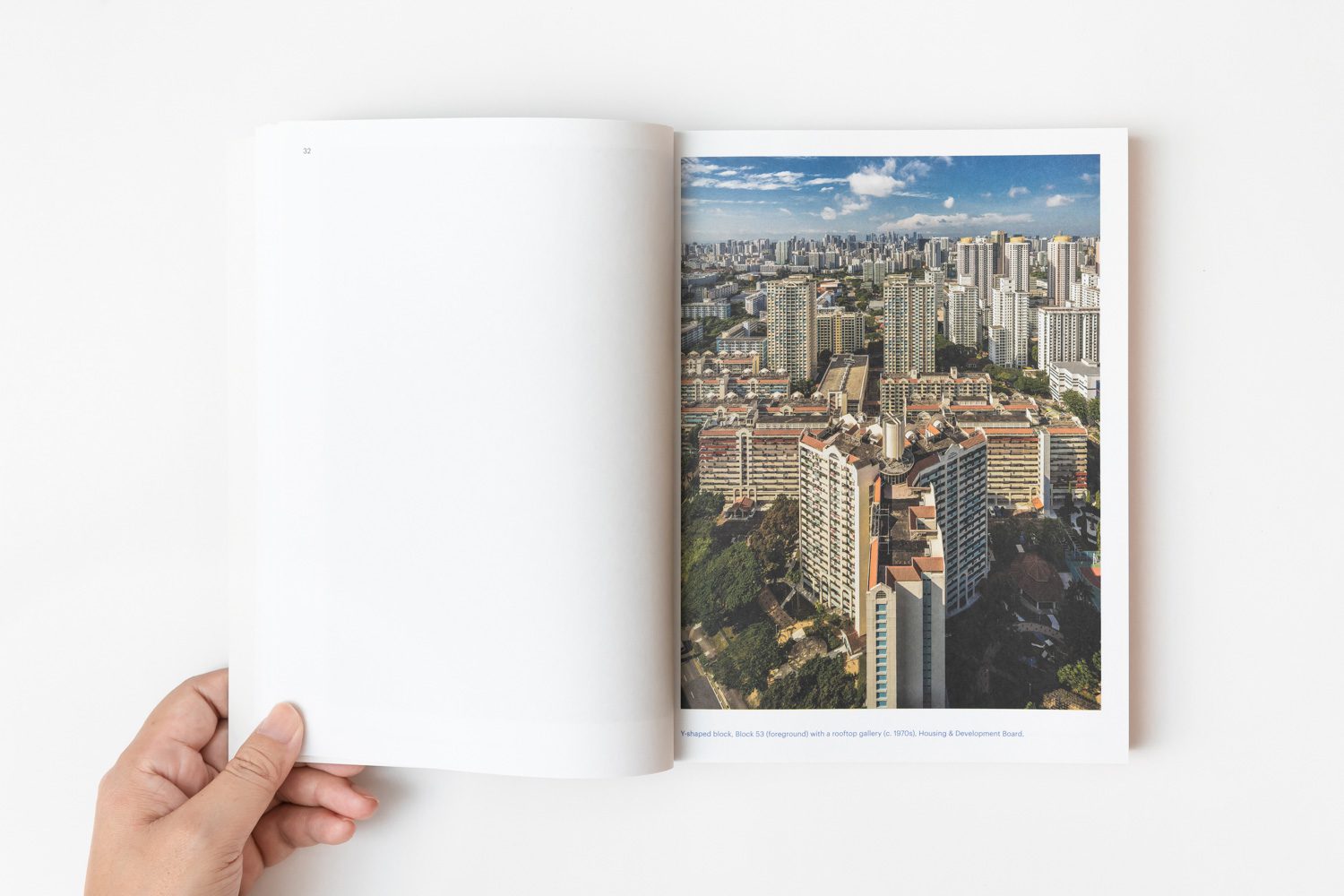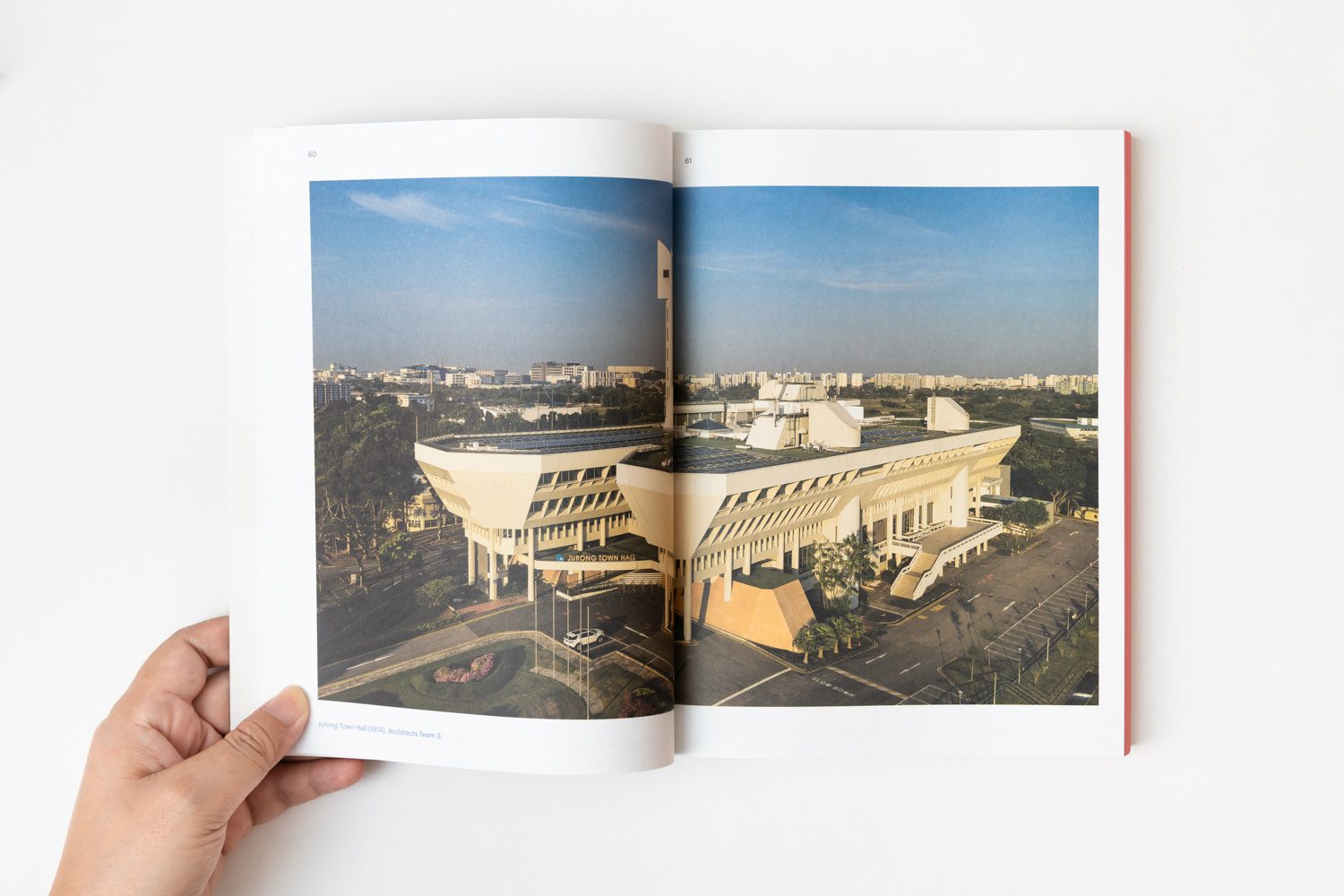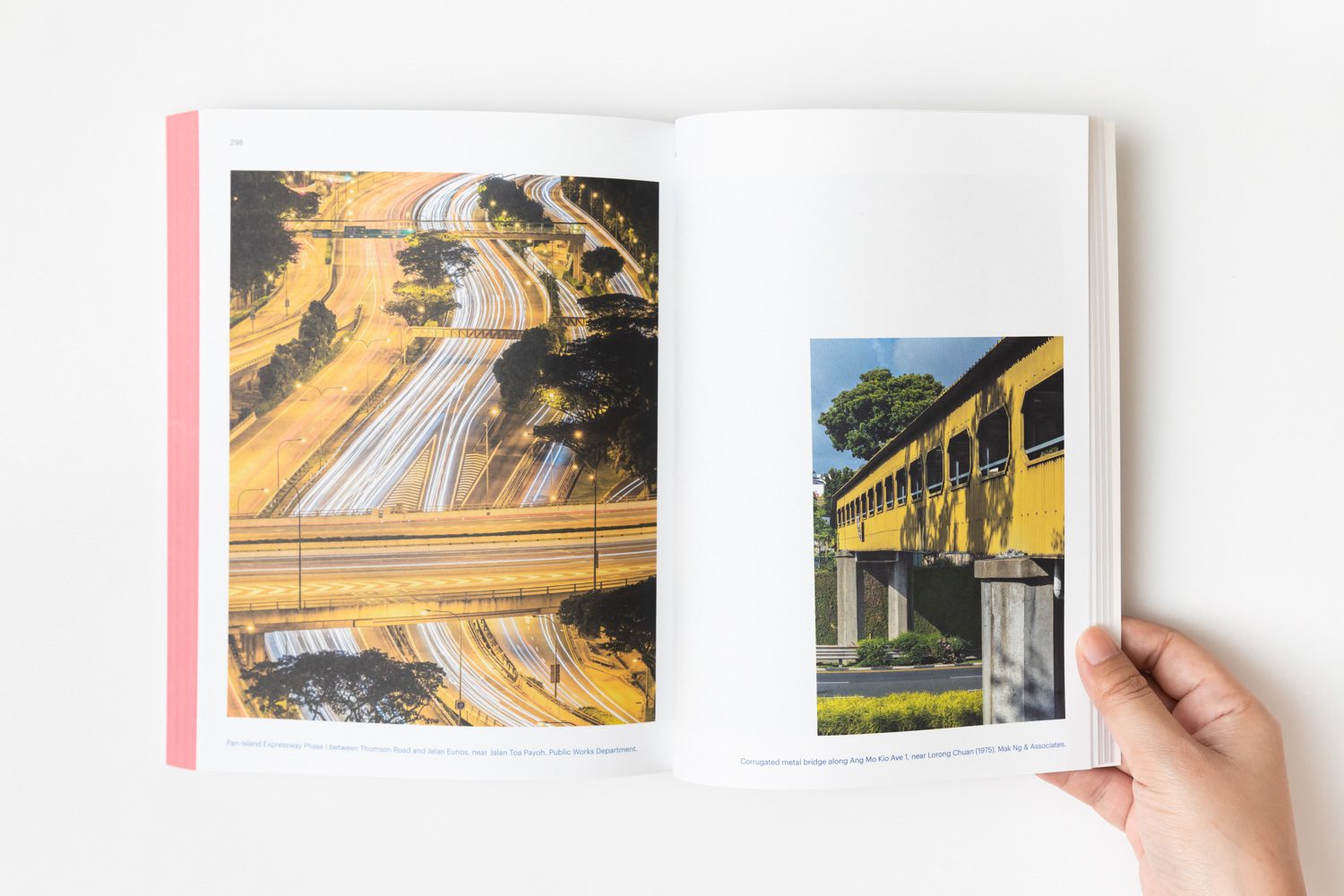THE BOOK INVESTIGATES THE BUILT STRUCTURES CONSTRUCTED IN SINGAPORE BETWEEN THE 1930S AND THE 1980S, FOCUSING ON THEIR CONTRIBUTION TO THE FORMATION OF THE NATION AND THE LIVES OF ITS PEOPLE
TEXT: PRATCHAYAPOL LERTWICHA
PHOTO: KETSIREE WONGWAN
(For Thai, press here)
Jiat-Hwee Chang, Justin Zhuang and Darren Soh
National University of Singapore Press, 2023
7 x 1.1 x 10.75 inches
Paperback 376 pages
ISBN 978-981-325-187-8
Despite the fact that Singapore is only a small island off the southern tip of the Malay Peninsula, the country’s economic standing is at the forefront of the global stage. This is proven by Singapore being ranked third out of 63 countries in the World Competitiveness Ranking 2022 Report by the International Institute for Management Development (IMD).
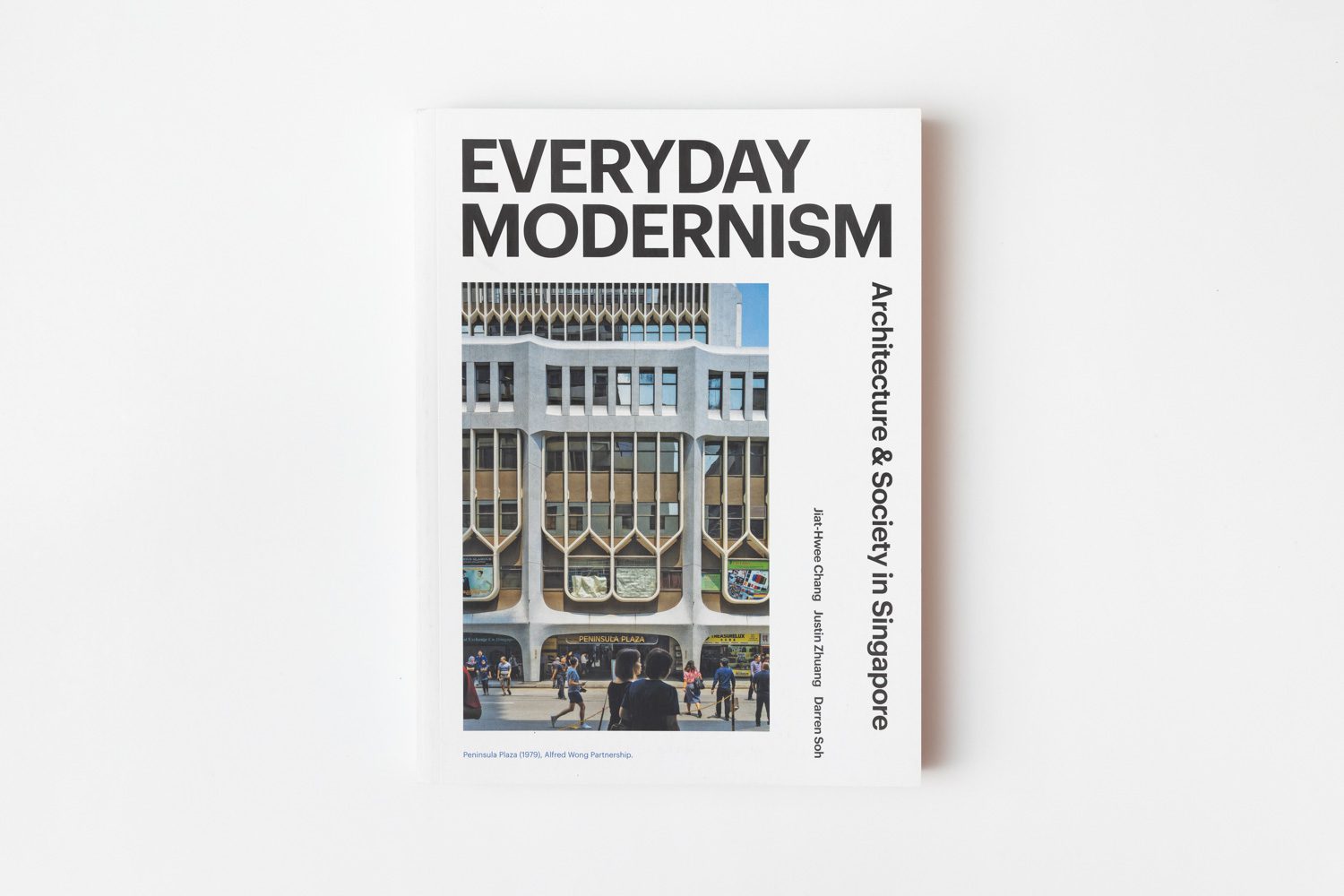
Singapore has devised a plethora of mechanisms for its development as a nation, including infrastructures such as housing projects, schools, libraries, and public roadways. As the country experienced rapid development between the 1960s and the 1970s, these infrastructures proliferated in large numbers and at a fast pace. The majority of them follow the modernist design aesthetics that were introduced in Singapore in the early twentieth century.

The book ‘Everyday Modernism: Architecture and Society in Singapore’ investigates the built structures constructed in Singapore between the 1930s and the 1980s, with a focus on Modernist architecture and its contribution to the formation of the nation and the lives of its people.

The book is divided into 33 essays, each of which features a building or built structure, its history, historical context, and hidden stories. The book’s two authors, Jiat-Hwee Chang and Justin Zhuang, include not only iconic buildings such as the Pearl Bank Apartment, but also several common structures that are closely related to people’s everyday lives, such as overpasses, playgrounds, parking structures, and columbaria, or works with specific and notable characters such as the movie theater that was converted from a Christian church.

Readers are able to learn the backstories and origins of these built structures, as well as the ups and downs and obstacles they encountered, through these stories. The essay ‘Pearl Bank Apartment: How Can We Maintain The High Life?’ essay recounts the origins of Pearl Bank Apartment, the apartment building that once held the record for the highest building in Southeast Asia. The building was conceived as a result of Singapore’s housing policy, implemented in response to the country’s expanding population amid land scarcity.
The essay also sheds light on the difficulties in maintaining Pearl Bank Apartment and the conflict that arose between those who wanted to save the building and those who supported its demolition and new development before the building was eventually demolished in 2020. The story depicts the building from its conception to its demolition, bringing life and spirit to the structure that makes it so much more than just a lifeless pile of bricks and concrete.

Aside from the writings, which are jam-packed with great stories and interesting information, readers can enjoy Darren Soh’s incredible photographs, which range from large-scale structures to playground equipment, as well as old images and drawings that illustrate the lifecycle of each built structure.
The book portrays the significance of these structures, whether it is a parking building, an expressway, a food court, a mosque, a shopping mall, or a hotel, and their roles as great historical evidence that exemplify the development of this small island country called Singapore. Most importantly, it shows that modernist architecture in Singapore is not just a collection of beautiful built structures that look nice in photographs but actual places where people eat, stay, live, find, and achieve a better way of life over time.


